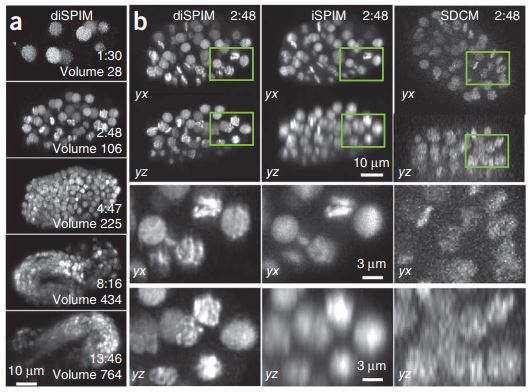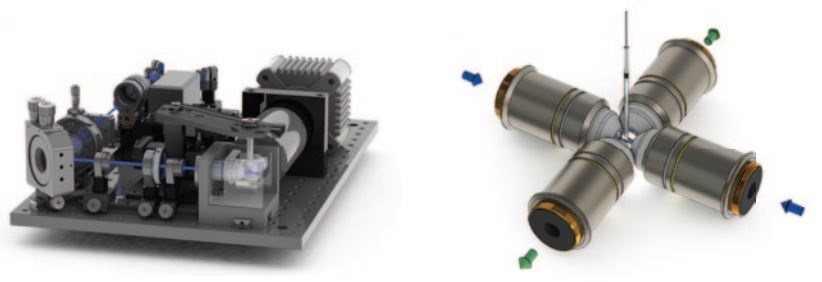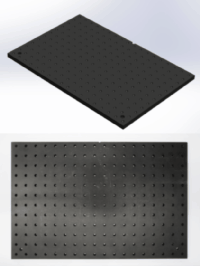
Light sheet fluorescence microscopy (LSFM) is a fluorescence microscopy technique with an intermediate-to-high optical resolution, but good optical sectioning capabilities and high speed. In contrast to epifluorescence microscopy only a thin slice (usually a few hundred nanometers to a few micrometers) of the sample is illuminated perpendicularly to the direction of observation. For illumination, a laser light-sheet is used, i.e. a laser beam which is focused only in one direction (e.g. using a cylindrical lens). A second method uses a circular beam scanned in one direction to create the lightsheet. As only the actually observed section is illuminated, this method reduces the photodamage and stress induced on a living sample. Also the good optical sectioning capability reduces the background signal and thus creates images with higher contrast, comparable to confocal microscopy. Because LSFM scans samples by using a plane of light instead of a point (as in confocal microscopy), it can acquire images at speeds 100 to 1000 times faster than those offered by point-scanning methods. Comparison of different microscopy illumination modalities (LSFM: lightsheet fluorescence microscopy, WF: widefield microscopy, CF: confocal microscopy). LSFM combines good z-sectioning (as confocal) and only illuminates the observed plane. This method is used in cell biology and for microscopy of intact, often chemically cleared, organs, embryos, and organisms. Link https://en.wikipedia.org/wiki/Light_sheet_fluorescence_microscopy

Automated cell tracking in the Zebrafish Digital Embryo The images show a montage of DSLM microscopy data (right half of embryo: animal view, maximum-intensity projection) and the Digital Embryo (left half of embryo) with color-encoded cell migration directions. Color code: dorsal migration (cyan), ventral migration (green), toward or away from body axis (red or yellow), toward yolk (pink). Reference: Keller et al. 2008, Science.

Dual-view iSPIM improves axial resolution in 4D embryonic a b diSPIM SDCM imaging. (a) Selected diSPIM maximum-intensity projections of
GFP-labeled histones in nematode embryo, from 786 time-point volumetric series. Projections were computed 60 degrees relative to y axis.
(b) Comparison between diSPIM (left column), single view iSPIM (middle) and SDCM (right) at the same time point in embryogenesis. Lower two rows: higher magnification views of boxed nuclei in top two rows. All times are hours:minutes post fertilization. Projections are taken at
0 or 90 degrees relative to y axis. Reference: Wu et. al. 2013 Nature Biotechnology




